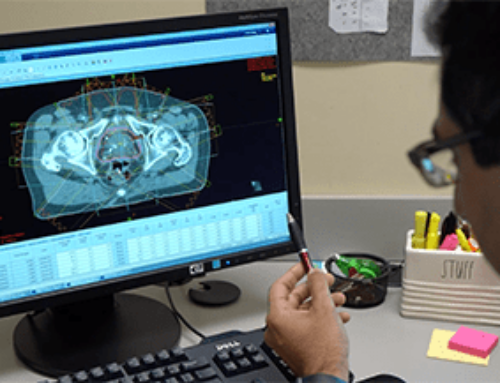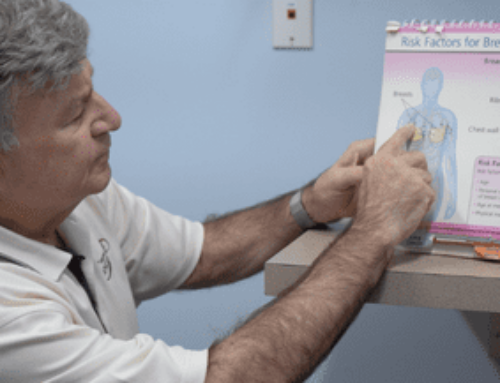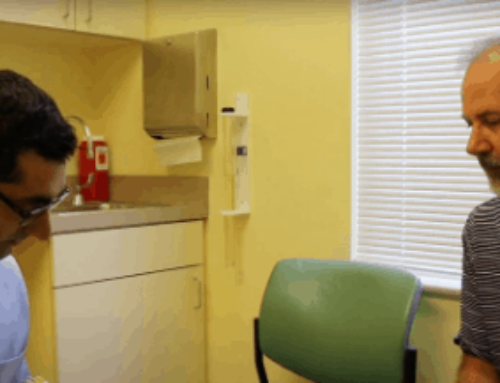Treatment for prostate cancer depends on several factors. And when deciding on the optimal treatment plan, your healthcare team will consider:
- The type and stage of the cancer
- Your age and life expectancy
- Any other serious health conditions you have
- Possible side effects of treatments
- Your personal preferences
- Your feelings (and your doctor’s opinion) about the need to treat the cancer right away
It’s important to discuss all your treatment options, including their goals and possible side effects, with your doctors to help make the decision that best fits your needs.
“A lot of our patients under 65 years of age come in and have the option of either surgery or radiation,” says Steven G. Lester, M.D., F.A.C.R.O., a board-certified radiation oncologist, at Central Florida Cancer Care Center. “They are trying to decide which way they would like to be treated. Patients often ask what their stage is and try to make a determination with regards to treatment.”
Doctors may also classify prostate cancer based on the risk that it will recur after treatment. Men in the high-risk group are usually offered aggressive treatment. Those in the low-risk group may be offered active surveillance without immediate treatment.
 There is no single option that’s right for every man with prostate cancer. Some tumors grow very slowly or not at all, so you may never need treatment. Others advance faster and spread to different places in your body.
There is no single option that’s right for every man with prostate cancer. Some tumors grow very slowly or not at all, so you may never need treatment. Others advance faster and spread to different places in your body.
If you are diagnosed with cancer, you should discuss your treatment options with a radiation oncologist, a cancer doctor who specializes in treating disease with radiation therapy, and a urologist, a surgeon who specializes in the urinary tract.
Options for dealing with prostate cancer include:
- Active surveillance
- Surgery
- External beam radiation therapy
- Prostate brachytherapy
- Hormone therapy
- Chemotherapy
- Cryosurgery
Sometimes a combination of treatments is best for your cancer, such as surgery followed by external beam radiation, or external beam radiation therapy with hormone therapy. Some men can safely postpone treatment and watch it closely until treatment is needed. This is called watchful waiting.
“Staging is important for prostate cancer, but now we use risk factors to help decide as to the chances the surgeon can remove the prostate cancer, which means probably removing the entire prostate,” says Dr. Lester. “If a patient has a very low-risk disease (cancer), they have the option to go with surgery or radiation.”
Watchful Waiting
Because prostate cancer often grows very slowly, some men (especially those who are older or have other serious health problems) might never need treatment. Instead, their doctors may recommend watchful waiting, observing the situation and waiting until they have symptoms to initiate treatment.
With active surveillance, you may have regular PSA (prostate-specific antigen) blood tests, rectal exams, ultrasounds, and biopsies to see if the cancer is getting worse. If it starts to grow or spread, you can explore other treatment options.
Surgery
Surgery is a common choice to try to cure prostate cancer if it hasn’t spread outside the prostate gland. The primary type of surgery for prostate cancer is a radical prostatectomy. In this operation, the surgeon removes the entire prostate gland plus some of the tissue around it, including the seminal vesicles.
“Younger patients in their early 50s often opt for surgery,” says Dr. Lester. “Patients 65 or older usually have radiation. Everyone in the middle has to determine which treatment modality is best for them. And it comes down to how they feel emotionally about the treatments regarding potential side effects. Patients will come in, we will discuss their options with them, we’ll review whether they understand all the options, and then we’ll make a decision.”
Radiation Therapy
 There are two forms of radiation treatment typically used for prostate cancer, radioactive seed implant and daily radiation treatment utilizing image-guided radiation therapy (IGRT) or intensity-modulated radiation therapy (IMRT) techniques. Many patients are candidates for both or a combination of the two treatments.
There are two forms of radiation treatment typically used for prostate cancer, radioactive seed implant and daily radiation treatment utilizing image-guided radiation therapy (IGRT) or intensity-modulated radiation therapy (IMRT) techniques. Many patients are candidates for both or a combination of the two treatments.
Image-guided radiation therapy (IGRT) is a type of conformal radiotherapy that allows higher doses of radiation to be given to the tumor while limiting the impact on healthy tissue. The method uses advanced imaging technology before and during radiation therapy to enhance the precision and accuracy of treatment delivery.
“Patients who have a higher-risk disease or possible positive margins or extension outside of the gland often opt for radiation because they don’t want to go through surgery and radiation,” says Dr. Lester. “Each patient has to individualize their treatment plan, know their options, and in the end, decide which way they would like to be treated. You must talk to your doctor, and you must get all your questions answered.”
According to Dr. Lester, having the presence and support of a loved one can be very helpful in helping patients understand all the options and determine which treatment would be best for them.
“It’s always good to bring a family member to the doctor’s office because it’s hard to remember everything,” he says. “Once you have all the facts, you can make your decision. Move forward with it, and don’t look back. Don’t regret your decision. Just move forward and do what’s best for you.”





